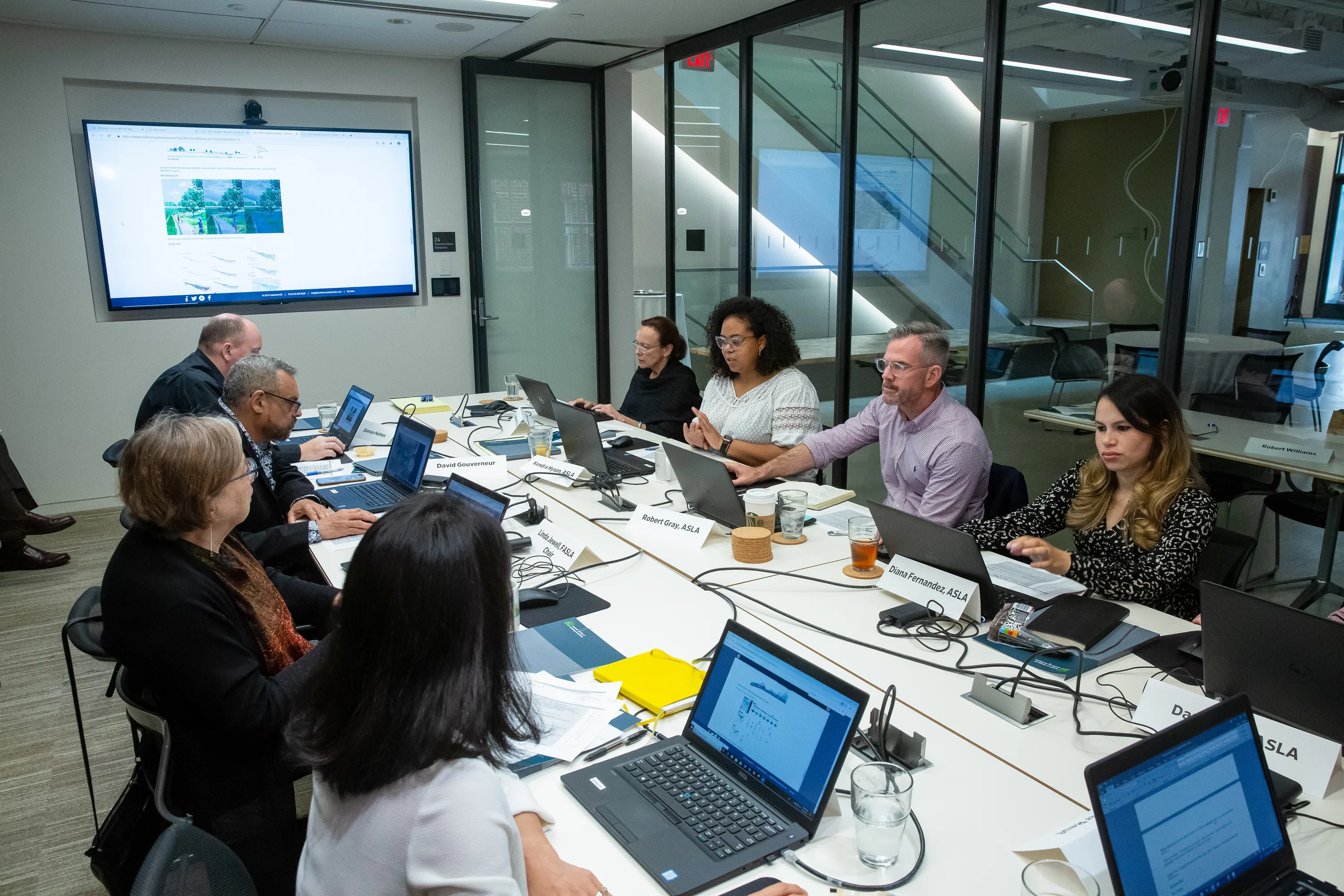Throughout the submissions, a common thread wound through the projects’ theses: climate change, and the myriad of challenges it presents. Rob noted that much of the work was focused on underserved communities, which are often the ones most affected by climate change: “We were excited to see so much of the work geared towards finding creative solutions that benefit historically vulnerable communities helping them to address issues such as sea level rise, sanitation, food production, and access to green space.”
Landscape architecture will be on the front lines of climate change, and students looking towards their chosen field are well prepared. “It was invigorating to see the breadth of topics the students are addressing in their coursework; landscape architecture is being used as a mechanism to solve a range of social and ecological challenges we are facing around the globe,” said Rob.





